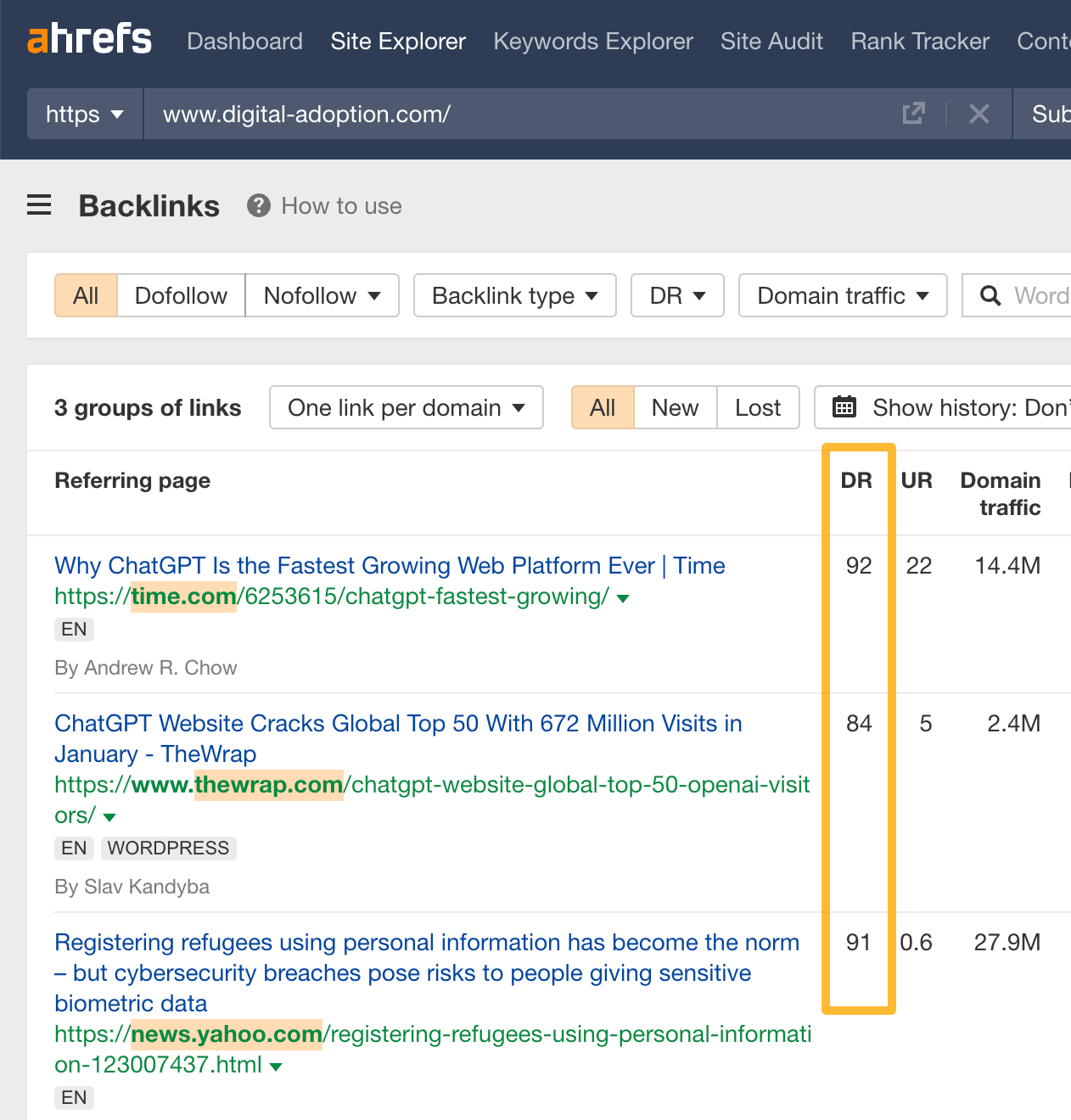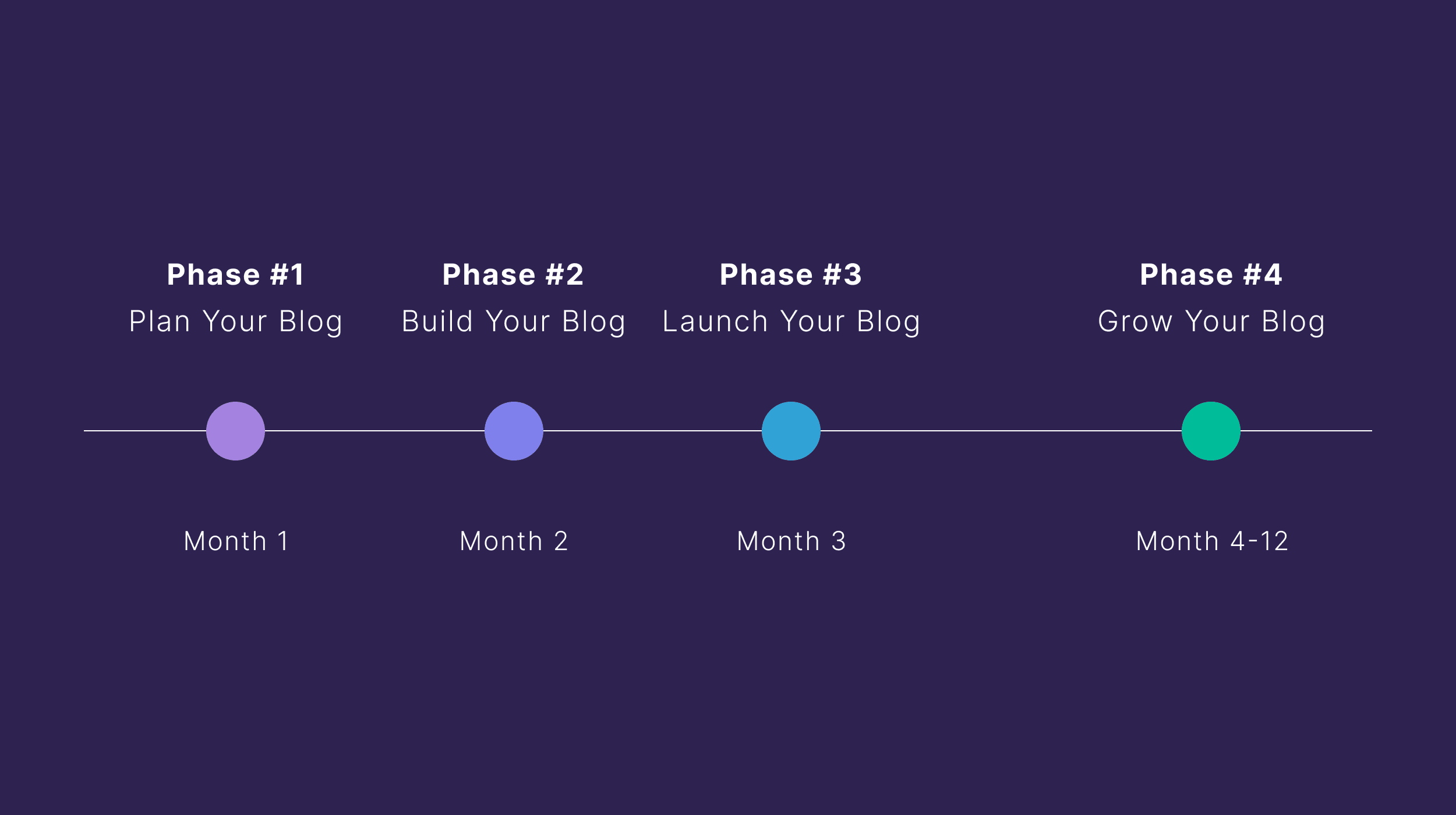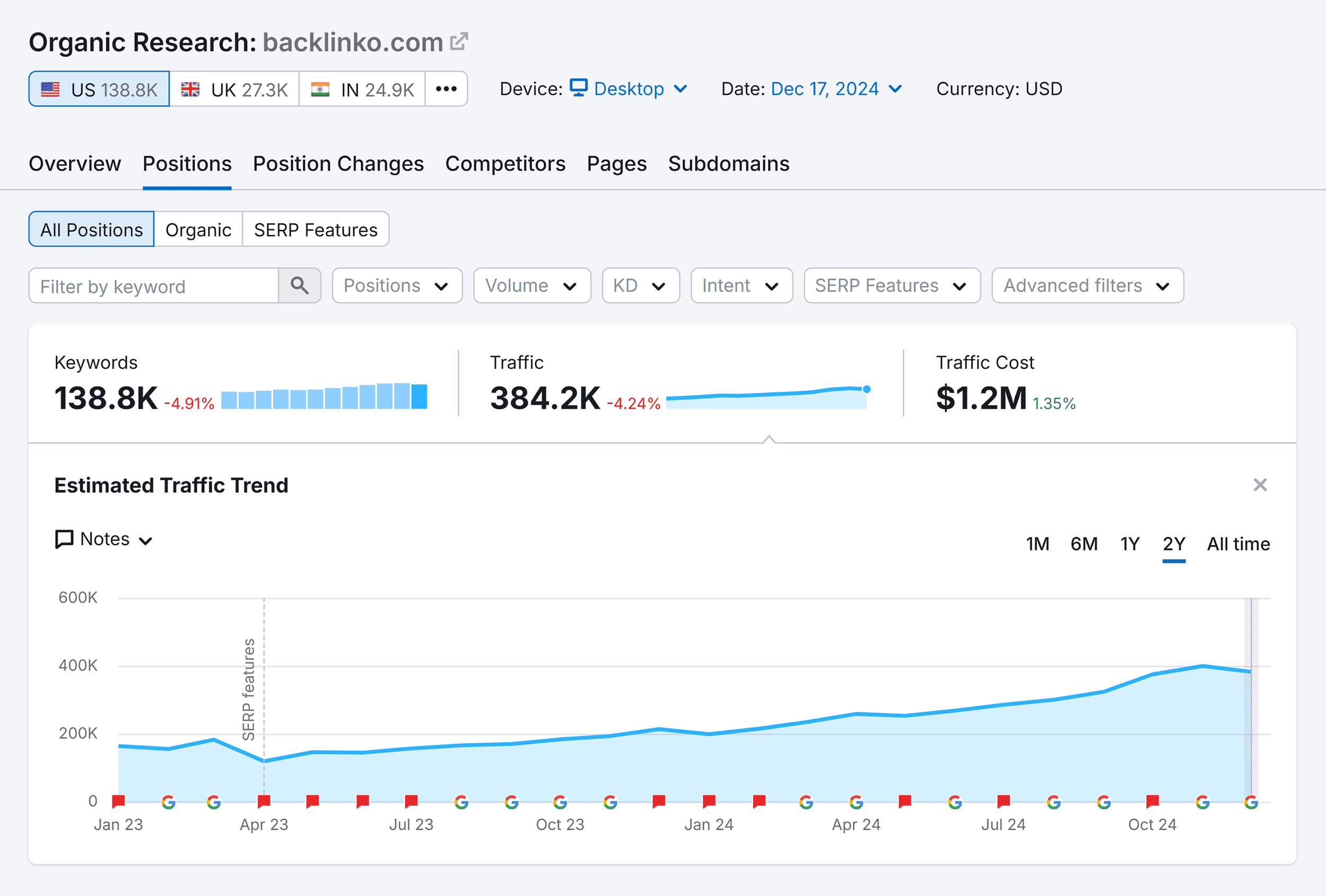Many popular link building tactics produce low-quality links that don’t improve SEO performance.
Even if these techniques make an impact, it’s often for a short time, and Google can easily devalue them down the line.
Here are four tactics for building high-quality links that help you stay ahead of your competition, expose your brand to new audiences, and are less likely to be devalued in future algorithm updates.
Data journalism is a way of enhancing or creating newsworthy content by analyzing unique data sets. It can fall under digital PR, though it typically requires more detailed research.
This technique works because reporters love a good statistic they can either quote or write an opinion piece about. Be the source of such data, and you can earn many high-quality links anytime your data becomes relevant to trending news topics.
Examples
Data journalism can be quite simple. For example, in another case study from Search Intelligence, Fery’s team used Ahrefs’ Keywords Explorer as a data source for a cybersecurity PR campaign.
The study reveals the top UK banks where customers seek help with fraud, allowing journalists to report on which banks are more secure than others.
The data fuelling these insights is keyword search volume. That’s it.
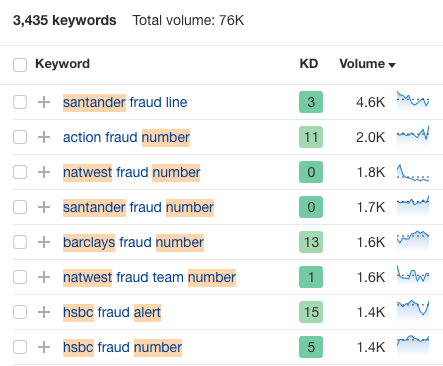
This method doesn’t take very long, doesn’t need a data scientist and can very easily be replicated in other industries where search popularity can unearth interesting insights.
In another example (and perhaps one of our all time favorites), marketing firm Yard created a data study comparing the CO2 emissions of various celebrities and ranking the worst offenders.
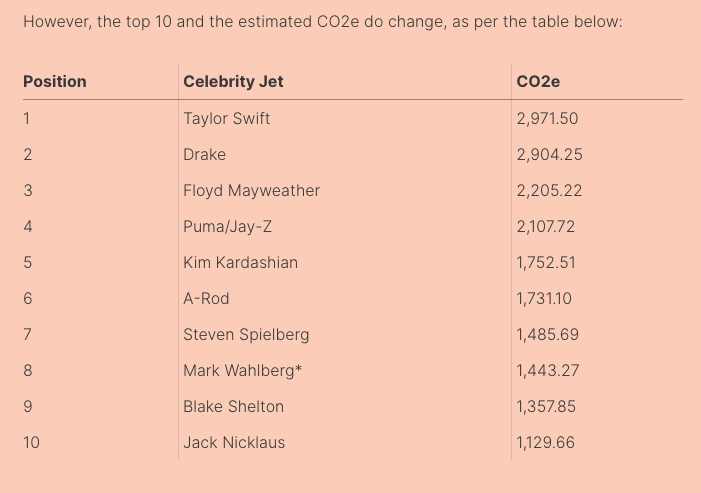
If you follow celebrity news, there’s no way you missed reports of Taylor Swift’s private jet emissions being among the highest compared to other celebrities.
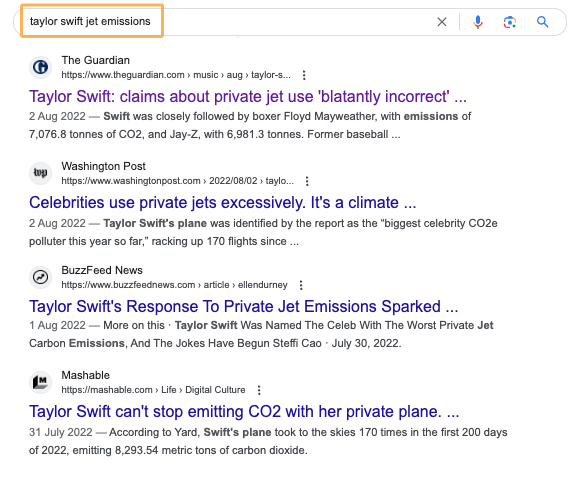
Every single one of these news stories originated from the data study.
When the study was first released, it went viral and earned links from almost 2,000 referring domains within the first month.
But that’s not all.
This topic trended in news cycles again when rumours spread that Taylor Swift attended a Jets game to bury the original negative publicity about her private jet usage, earning Yard a well-deserved second round of links.
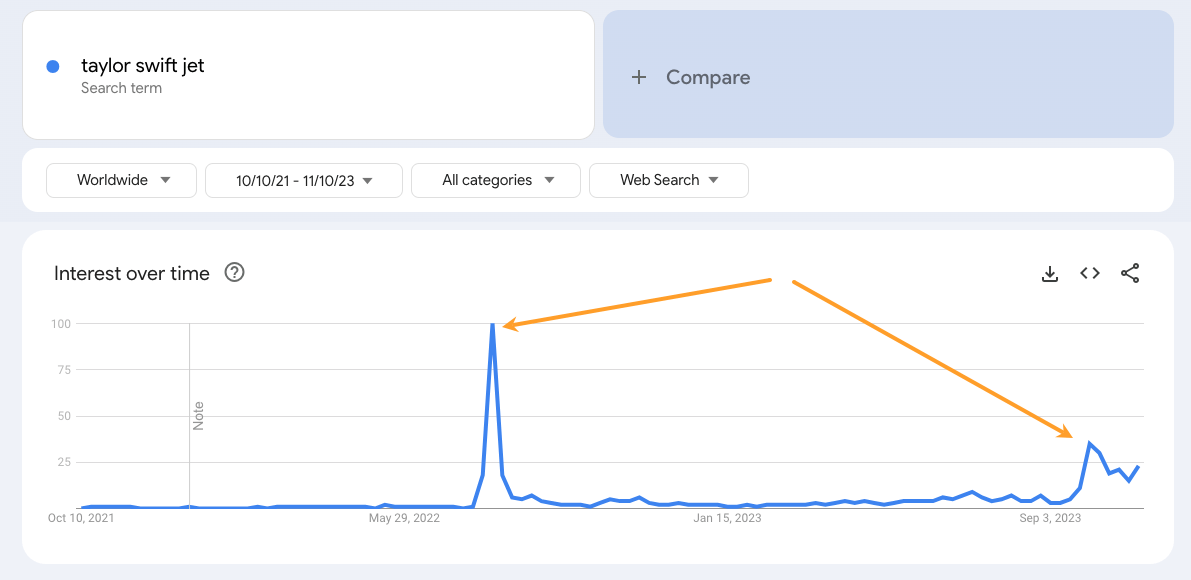
Today, this post has 1,861 links from 1,155 referring domains, 77% of them are dofollow, and 38.4% are higher than DR 60.
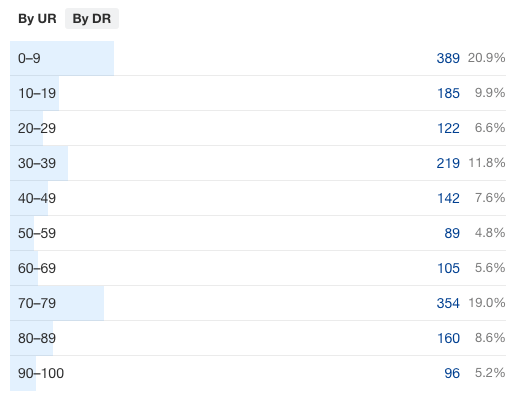
Talk about drool-worthy results! That’s high-quality link building done right.
How to do it
Successful data journalism is similar to digital PR but relies on the intriguing, data-backed insights you can unearth.
In a nutshell, the process looks like this:
- Find a data-driven content angle that gets links and media attention
- Gather data to provide new or updated insights on the topic
- Tell journalists about your findings
Start by considering “your money or your life” content angles that everyday folk care about. It’s easy to fall into the trap of thinking too narrow or pitching ideas only a small demographic may understand.
For instance, cybersecurity is not a sexy topic journalists or their readers will likely care about. There’s also not a high degree of literacy about the topic among the general population.
But everyone cares about whether their bank is secure and how safe their money is.
This concept needs no explanation and that’s exactly why data that helps answer the question “how safe is your bank?” worked exceptionally well as a link building tactic in the example above.
You can also use Content Explorer to gather more ideas like:
- Evergreen yet stale topics that you can update with more recent data
- Data you can visualize better or repurpose into a different content format
- Trending angles in other industries you can apply to your industry
For example, on the topic of ChatGPT, we found Rand Fishkin’s post claiming usage has declined 29% between May and August 2023 and that 30% of its usage is by programmers.

You don’t need original ideas to succeed. If you’ve got the data to back it up, you can easily take the angles of a “useage patterns” or “most popular audience segments” and apply them to popular tools in your industry.
Some decent data sources you can start with include:
- Search data: Like Ahrefs’ Keywords Explorer for uncovering interesting search patterns.
- Historical data: Like Google Trends for highlighting growth or decline patterns over time.
- Scientific research: Like on Google Scholar or in specific research journals.
- Public niche data: For instance, Yard’s study used the CelebrityJets Twitter page.
- Proprietary data: From within your (or your client’s) organization.
When you find an interesting insight or pattern worth sharing, write a press release about it and share it with journalists who frequently report on the topic.
Statistics pages are curated lists of facts and figures in a particular industry. These pages attract evergreen links for as long as the statistics remain relevant.
It’s one of our favorite link building tactics. Here’s how we’ve used it quite successfully over the years.
Example
We first launched a detailed list of SEO statistics in 2020 and it has been naturally earning high-quality links ever since.
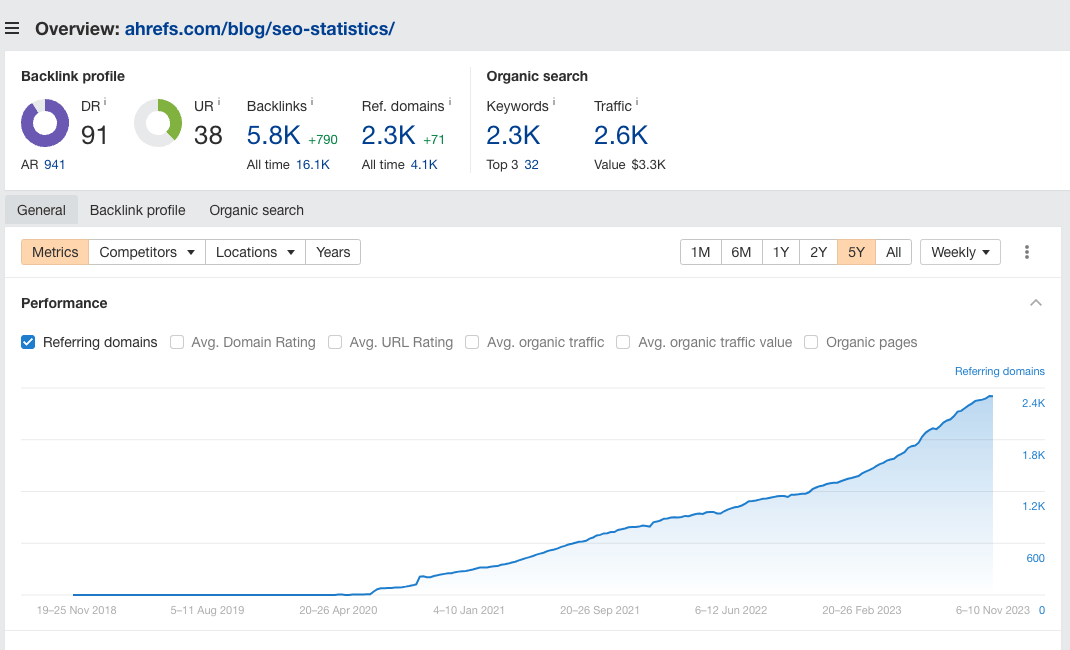
Currently, the page has:
- 5,787 backlinks
- 2,282 referring domains
- 82% “dofollow” links
- 37.7% from DR 60+ websites
While we used some outreach techniques in the early days, most of the success has come from the page’s ability to maintain top position rankings for competitive keywords.
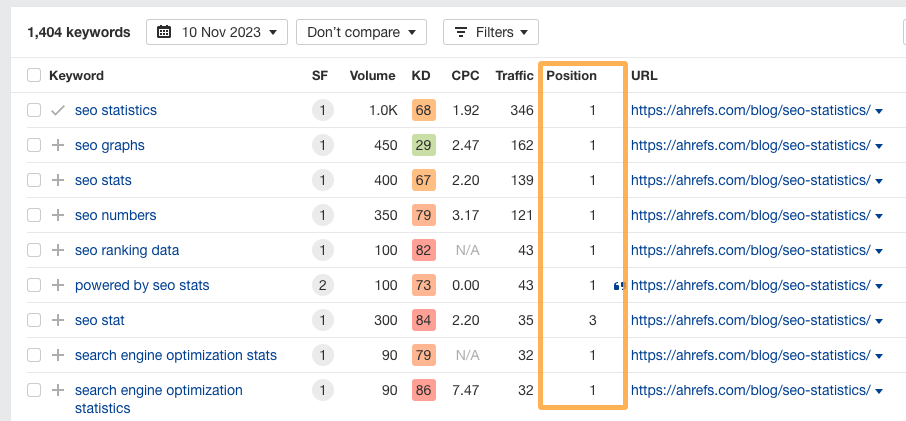
Do it right, and this tactic remains wildly effective for earning links naturally for many years.
How to do it
Start by entering a few broad topics related to your website into Ahrefs’ Keywords Explorer. For example, we might enter the following for Ahrefs:
- SEO
- Content marketing
- Link building
Then navigate to the Matching Terms report and apply the inclusion filter for things like stats, statistics, facts, or figures. Make sure your filter is set to include any of these phrases.
Then it’s just a matter of checking out the results to find a relevant topic you want to write about.
We went for “SEO statistics”:
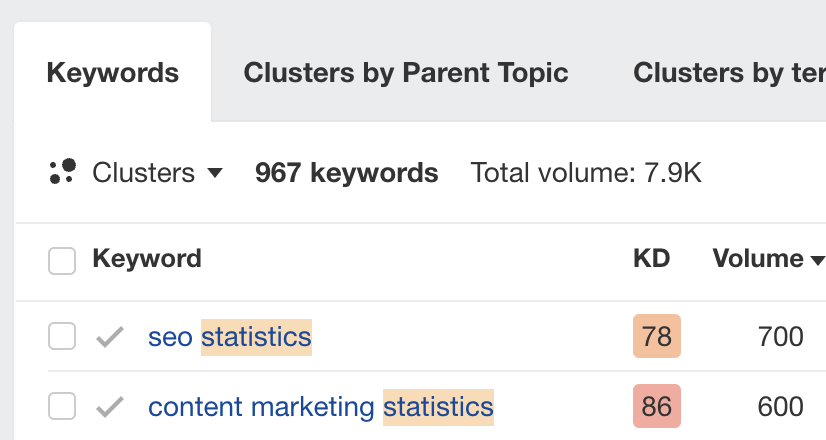
Once you pick your topic, it’s a just matter of curating linkworthy stats and publishing them on a page.
While you can earn some seed links with early outreach efforts, long term success comes down to keeping your content updated with the latest data. That’s the best way to compound performance year on year, earning many high-quality links with no ongoing outreach needed.
Further reading
Relationship-based link building prioritizes long-term relationships with journalists, writers, and editors.
It is an effective addition to digital PR campaigns as you can shortcut the time it takes to find the right people to distribute your content.
Better yet, you can be a journalist’s first point of call when they write a story on topics you or your clients are experts in.
Example
Imagine having journalists contact you asking to feature your clients in upcoming stories. That’s exactly what growth marketing firm, EngineRoom, has achieved.
A journalist from Mamamia (DR 78) made a call out on Sourcebottle, the Australian equivalent of HARO, seeking expert advice on immigration law. EngineRoom’s link building expert, Don Milne, responded and won the story along with a high-quality link.
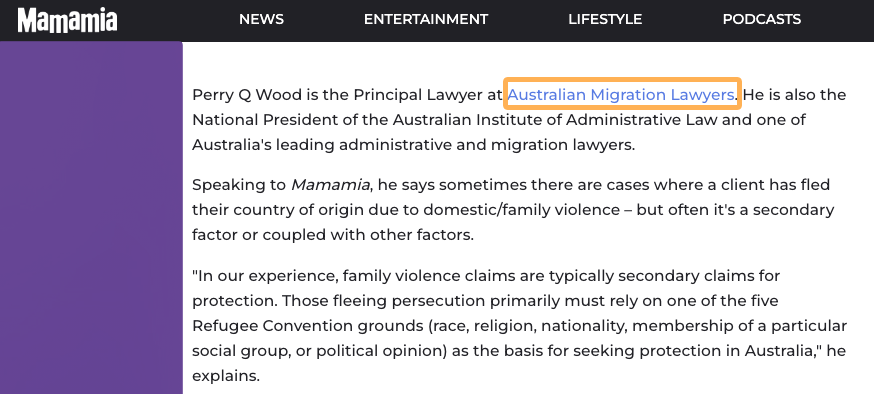
Then, the real magic started.
Instead of ending things there, Don also shared a client list with the journalist in case they ever wanted to collaborate on future stories again.
Sure enough, a few weeks later, the journalist reached out, asking to connect with another client in the drug rehab space to develop a story on heroin addiction. The client is featured in about 30% of the completed article with detailed quotes from the founder and (of course) a link back to their website.
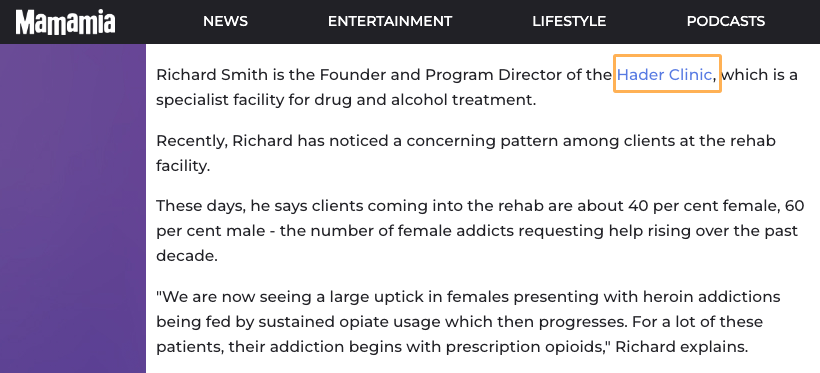
No pitching. No outreach. Just a genuine partnership and collaboration now earning multiple high-quality links for their clients.
How to do it
This technique is all about the follow-up after you collaborate on your first story with a journalist.
If getting the first foot in the door is where you’re stuck, you can check out our detailed guide on relationship-based link building by Irina Maltseva, the former Head of Marketing at Hunter.
Once you get that first story, make sure you keep the relationship going.
If you have a list of websites or clients you represent, create a professional document with a mini bio about each client. Make sure it’s also easily searchable for writers in a hurry and makes your contact details clear and easy to access.
Then, share it with journalists, writers, and editors you collaborate with so they can refer to it in the future if they need an expert on a specific topic for their content.
Final thoughts
Earning high-quality backlinks can be much easier than many people realize and cheaper too! All the examples shared in this post earned free link placements on high-authority websites and with minimal outreach.
These techniques have more staying power. They are also far less likely to be seen as “link manipulation” or devalued in future Google updates.
And, if you get your content angle just right, they also have the potential to be earning links many months, if not years, down the track!
Got questions? Ping me on LinkedIn.
Content Copyrights Belong to The Author. All Rights Reserved.
We're A Dallas Digital Marketing Agency That is Experts At Social Media Marketing, Website Design and Emarketing and Promotion.

